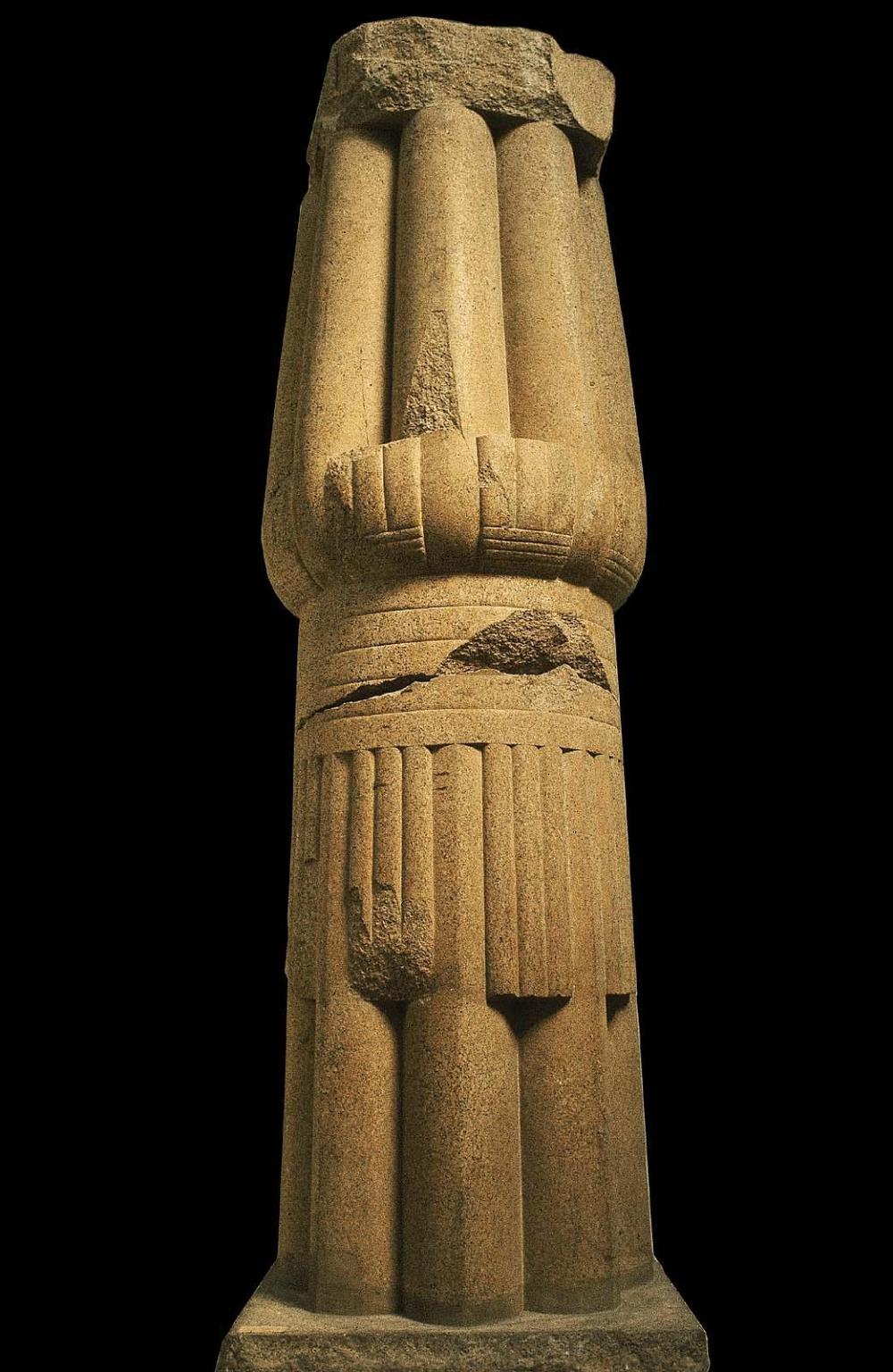Advanced Search 

Papyrus-bundle column
Egyptian
Middle Kingdom, Dynasty 12
1991–1780 B.C.
Findspot: Egypt, Bubastis
Medium/Technique
Granite
Dimensions
Height x diameter x Circumference: 458.8 x 125 x 392 cm (180 5/8 x 49 3/16 x 154 5/16 in.)
Other (Base): 55.8cm (21 15/16in.)
Other (Base): 55.8cm (21 15/16in.)
Credit Line
Egypt Exploration Fund by subscription
Accession Number89.556a-b
NOT ON VIEW
CollectionsAncient Egypt, Nubia and the Near East
ClassificationsArchitectural elements – Columns and capitals
DescriptionThe architects of Egyptian temples drew their inspiration from natural forms. They often created interior spaces in which columns modeled after Nile plants seemed to grow from the floor, painted with floral and animal motifs to evoke a marsh. This column, of which only the upper half (approximately) is preserved, was intended to represent a bundle of six papyrus stems tightly bound together just below the cluster of buds that forms the capital.
The column was discovered, along with the later column capital in the form of a fetish of the goddess Hathor, in the Great Temple of the feline goddess Bastet at Bubastis in the Nile delta. The temple was built during the Third Intermediate Period, but papyrus bundle columns are known to date to a much earlier time, and this example was probably made in Dynasty 12. Like many elements from Middle Kingdom temples in the Nile delta, the column was originally made for another structure and was removed by a later king for use in a project of his own, probably after the earlier building had long been abandoned. The location of the original temple can no longer be identified with certainty, but recent scholarship suggests that it was probably located on the same site or nearby. The monolithic column was carved from a massive block of pink granite quarried at Aswan, some 1,126 kilometers (700 miles) south of the Nile delta. After being shaped in the quarry, the block was transported by barge to the Delta, where the final finishing would probably have taken place.
The column was discovered, along with the later column capital in the form of a fetish of the goddess Hathor, in the Great Temple of the feline goddess Bastet at Bubastis in the Nile delta. The temple was built during the Third Intermediate Period, but papyrus bundle columns are known to date to a much earlier time, and this example was probably made in Dynasty 12. Like many elements from Middle Kingdom temples in the Nile delta, the column was originally made for another structure and was removed by a later king for use in a project of his own, probably after the earlier building had long been abandoned. The location of the original temple can no longer be identified with certainty, but recent scholarship suggests that it was probably located on the same site or nearby. The monolithic column was carved from a massive block of pink granite quarried at Aswan, some 1,126 kilometers (700 miles) south of the Nile delta. After being shaped in the quarry, the block was transported by barge to the Delta, where the final finishing would probably have taken place.
ProvenanceBubastis, great temple of Bastet, hypostyle hall. 1887–88: excavated by Edouard Naville for the Egypt Exploration Fund; awarded to the Egypt Exploration Fund by the government of Egypt; 1889: April 12, 1888, presented to the MFA at the Sixth Annual General Meeting of the Egypt Exploration Fund, through the Reverend W. C. Winslow. (Accession Date: January 1, 1889)
